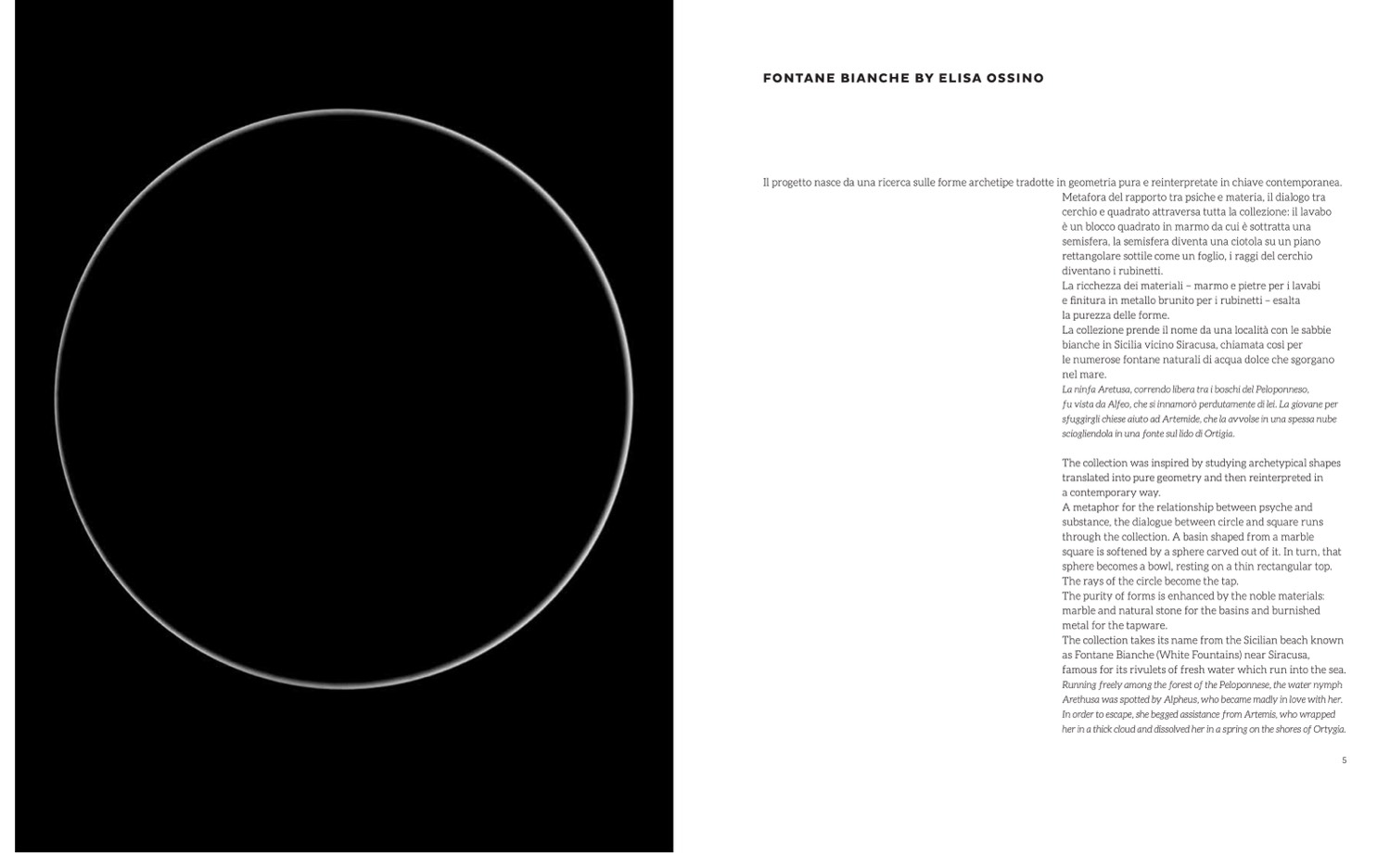
FONTANE BIANCHE BY ELISA OSSINO
Il progetto nasce da una ricerca sulle forme archetipe tradotte in geometria pura e reinterpretate in chiave contemporanea.
Metafora del rapporto tra psiche e materia, il dialogo tra
cerchio e quadrato attraversa tutta la collezione: il lavabo
è un blocco quadrato in marmo da cui è sottratta una
semisfera, la semisfera diventa una ciotola su un piano
rettangolare sottile come un foglio, i raggi del cerchio
diventano i rubinetti.
La ricchezza dei materiali – marmo e pietre per i lavabi
e finitura in metallo brunito per i rubinetti – esalta
la purezza delle forme.
La collezione prende il nome da una località con le sabbie
bianche in Sicilia vicino Siracusa, chiamata così per
le numerose fontane naturali di acqua dolce che sgorgano
nel mare.
La ninfa Aretusa, correndo libera tra i boschi del Peloponneso,
fu vista da Alfeo, che si innamorò perdutamente di lei. La giovane per
sfuggirgli chiese aiuto ad Artemide, che la avvolse in una spessa nube
sciogliendola in una fonte sul lido di Ortigia.
The collection was inspired by studying archetypical shapes
translated into pure geometry and then reinterpreted in
a contemporary way.
A metaphor for the relationship between psyche and
substance, the dialogue between circle and square runs
through the collection. A basin shaped from a marble
square is softened by a sphere carved out of it. In turn, that
sphere becomes a bowl, resting on a thin rectangular top.
The rays of the circle become the tap.
The purity of forms is enhanced by the noble materials:
marble and natural stone for the basins and burnished
metal for the tapware.
The collection takes its name from the Sicilian beach known
as Fontane Bianche (White Fountains) near Siracusa,
famous for its rivulets of fresh water which run into the sea.
Running freely among the forest of the Peloponnese, the water nymph
Arethusa was spotted by Alpheus, who became madly in love with her.
In order to escape, she begged assistance from Artemis, who wrapped
her in a thick cloud and dissolved her in a spring on the shores of Ortygia.
5

